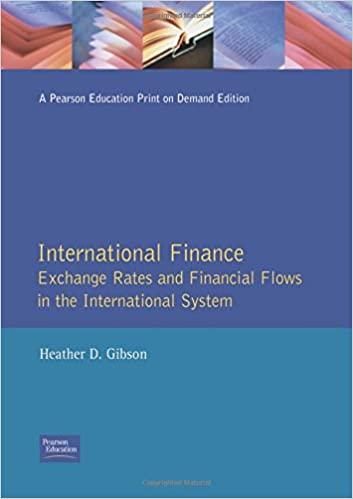Question
4. Consider the two (excess return) index-model regression results for stocks A and B . The risk-free rate over the period was 6%, and the
4.Consider the two (excess return) index-model regression results for stocks A and B. The risk-free rate over the period was 6%, and the markets average return was 15%. Performance is measured using an index model regression on excess returns.
| Stock A | Stock B | ||||||||||
| Index model regression estimates | 1% + 1.2(rM rf) | 2% + 0.8(rM rf) | |||||||||
| R-square | 0.594 | 0.445 | |||||||||
| Residual standard deviation, (e) | 10.6% | 19.4% | |||||||||
| Standard deviation of excess returns | 21.9% | 25.5% | |||||||||
a. Calculate the following statistics for each stock (use whole percent values, 1%, not 0.01 for example, for your calculations): (Round your answers to 4 decimal places.)
| ||||||||||||||||||||||||||||||
b. Which stock is the best choice under the following circumstances?
i.This is the only risky asset to be held by the investor.
ii.This stock will be mixed with the rest of the investors portfolio, currently composed solely of holdings in the market-index fund.
iii.This is one of many stocks that the investor is analyzing to form an actively managed stock portfolio.
5.Consider the following information regarding the performance of a money manager in a recent month. The table represents the actual return of each sector of the managers portfolio in column 1, the fraction of the portfolio allocated to each sector in column 2, the benchmark or neutral sector allocations in column 3, and the returns of sector indices in column 4.
| Actual Return | Actual Weight | Benchmark Weight | Index Return | |||||||||
| Equity | 2.1 | % | 0.5 | 0.6 | 2.6% (S&P 500) | |||||||
| Bonds | 1.9 | 0.1 | 0.3 | 2.3 (Barclays Aggregate) | ||||||||
| Cash | 0.6 | 0.4 | 0.1 | 0.7 | ||||||||
a-1. What was the managers return in the month? (Do not round intermediate calculations. Input all amounts as positive values. Round your answer to 2 decimal places.)
Managers return in the month=
a-2. What was her overperformance or underperformance? (Do not round intermediate calculations. Input all amounts as positive values. Round your answer to 2 decimal places.)
Output performed by? or underput performed by? = Ans%
b. What was the contribution of security selection to relative performance? (Do not round intermediate calculations. Round your answer to 2 decimal places. Negative amount should be indicated by a minus sign.)
Contribution of Security selection =? %
c. What was the contribution of asset allocation to relative performance? (Do not round intermediate calculations. Round your answer to 2 decimal places. Negative amount should be indicated by a minus sign.)
Contribution of asset allocation = ? %
6.A global equity manager is assigned to select stocks from a universe of large stocks throughout the world. The manager will be evaluated by comparing her returns to the return on the MSCI World Market Portfolio, but she is free to hold stocks from various countries in whatever proportions she finds desirable. Results for a given month are contained in the following table:
| Country | Weight In MSCI Index | Managers Weight | Managers Return in Country | Return of Stock Index for That Country | |||||||||
| U.K. | 0.32 | 0.3 | 25% | 15% | |||||||||
| Japan | 0.45 | 0.2 | 17% | 17% | |||||||||
| U.S. | 0.2 | 0.19 | 10% | 13% | |||||||||
| Germany | 0.03 | 0.31 | 7% | 15% | |||||||||
a. Calculate the total value added of all the managers decisions this period. (Do not round intermediate calculations. Round your answer to 2 decimal places. A negative amount should be indicated by a minus sign.)
Added value %=?
b. Calculate the value-added (or subtracted) by her country allocation decisions. (Do not round intermediate calculations. Round your answer to 2 decimal places. A negative amount should be indicated by a minus sign.)
Contribution of country Allocation %=?
c. Calculate the value-added from her stock selection ability within countries. (Do not round intermediate calculations. Round your answer to 2 decimal places. Negative amount should be indicated by a minus sign.)
Contribution of stock selection %= ?
Step by Step Solution
There are 3 Steps involved in it
Step: 1

Get Instant Access to Expert-Tailored Solutions
See step-by-step solutions with expert insights and AI powered tools for academic success
Step: 2

Step: 3

Ace Your Homework with AI
Get the answers you need in no time with our AI-driven, step-by-step assistance
Get Started


